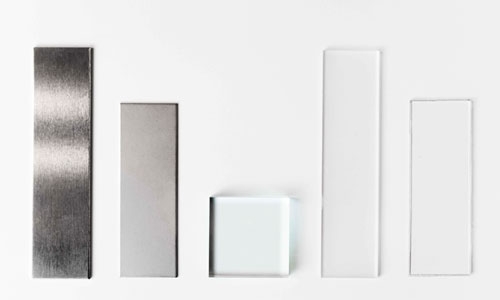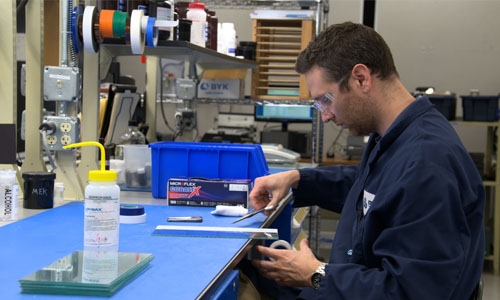Essential Surface Preparation Techniques for Optimal Adhesive Bonding
Preparing substrate surfaces meticulously before utilizing light-curable materials is critical to achieving reliable bonds. An adhesive may not cure completely, reach full strength, or fail due to contamination if substrate surfaces are not properly primed. Removing contaminants allows for the best wetting of the application area and increases adhesion to substrates.
When deciding on a preparation method, it is important to consider both the contaminant and the substrate(s). There are a few ways to treat surfaces, including cleaning and texturizing, that can promote better bonds and help reduce the chances of failure.
Cleaning Techniques
High-pressure air or brushing are two ways to remove surface particulates. Using compressors and precision nozzles to direct high-pressure air onto substrates dislodges loose particulates, and brushing employs mechanical brushes to remove more stubborn residues. Using either method helps to ensure that surfaces are clean and receptive to the adhesive.
Chemical contaminants and oily or greasy residue require aqueous (water) or solvent-based cleaners. Choosing a cleaner should be based on its ability to remove the contaminant without harming the substrate. Isopropyl alcohol (IPA) for light oils or fingerprints and acetone-based cleaners for cutting through heavier organic compounds are commonly used for cleaning.
The preferred method when using Dymax products is to wipe IPA on the substrate surface to remove impurities. These cleaners work by dissolving contaminants and holding them in solution until they are wiped away or evaporated, providing a clean surface that enhances adhesive bonding. If you are cleaning with IPA, ensure it fully evaporates before processing your components. Organic solvents like IPA will degrade light-curable materials over time and potentially affect bond strength. It's important to remember that the evaporation rate depends on the temperature, length of exposure time, and the concentration of the isopropyl alcohol.
An acetone-based cleaner can be a good solution because it is fast-evaporating, but it may leave a residue on the surface and need to be cleaned with IPA to remove possible contaminants from the acetone. However, its aggressiveness on sensitive substrates can damage some plastics and paints and should be used carefully.
Texturizing Techniques
Roughing substrate surfaces through sandblasting or acid etching can modify the surface topography, increasing the available surface area and creating mechanical interlocking sites. Creating a texture on the surface will help with adhesion, however, the surfaces must be free of any dust or particles prior to bonding. With some hard-to-bond plastics like polypropylene, silicones, HDPE, etc., this kind of abrasion may have minimal impact for bond strength.
Sandblasting propels abrasive material to roughen the surface and improve the mechanical bonding capability of an adhesive. If this process creates enough porosity that any wet adhesive doesn't cure, that could damage the bond because uncured adhesive eats away at cured adhesive over time. Porous substrates like ceramic or wood are more concerning because an adhesive can get deep into the pores and not cure completely.
Acid etching uses chemical solutions on glass and metal substrates to create micro-porosities to increase surface energy. Both methods improve the bonding process by increasing surface roughness and wettability, crucial for uniform adhesive application and curing.
The success of adhesive applications lies in the careful preparation of substrate surfaces. Combining cleaning and advanced texturizing with the appropriate use of solvents can help increase the strength of the adhesive bond and its longevity and reliability in critical high-performance settings.
_________________________________________________________
Enjoying This Content? Let’s Stay Connected.
If you’re finding value in our insights, why not get more of it—delivered right to your inbox? Subscribe to receive the latest technical articles, white papers, product news, and expert tips.


